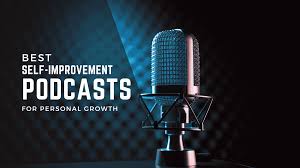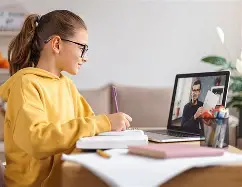The world is experiencing an era of new growth, one that is not powered by marble or oil paint instead, but rather through neural networks and algorithms. By the year 2025 Generative AI is more than just a device, it’s also a collaborator, muse as well as a medium in itself. From visual art and music to design and storytelling, Generative AI will be revolutionizing imagination breaking down boundaries, and allowing doors to open that artist’s had no idea of.
The top 10 groundbreaking methods Generative AI has been changing the definition of artistic expression and design in this exciting modern era.
AI-Generated Masterpieces
Visual art is now entering an entirely new realm. AI-powered models such as DALL*E and Midjourney have the ability to produce stunning pictures from a single text-based request. These aren’t templates or filters. They’re actually original pieces that are based on huge databases of style, history as well as technique. If it’s surrealism or impressionism or a completely new style, Generative AI can draw like an artist, or develop a style that is its unique.
It’s not automation. This is just imagination going on the overload. Generative Artificial Intelligence is revolutionizing the concept of creativity through giving artists the ability to imagine the inconceivable.
Music That Writes Itself
Musicians have joined forces with computers which results in the sound of a symphony. Software such as AIVA as well as Amper Music compose full symphonies or pop music and even generate background music within a matter of seconds. They’re not replacing music, they’re making them better.
The artists make use of Generative AI to discover new tunes, imitate the designs of legendary artists, or even push the boundaries of music. It’s as if you have Mozart, Miles Davis, and many other musical influences available to you. The harmonious blend proves Generative AI can be described as revolutionizing the concept of creativity through sound just as than sight.
Storytelling Gets Supercharged
Don’t worry about writers block. Generic AI tools such as ChatGPT and Sudowrite assist authors in brainstorming or co-write and ghostwrite complete books. Writers can create plot twists, character arcs as well as dialogue upon demand. By 2025, writing creatively will no longer be a solo adventure, it’s now a shared one.
Human creativity isn’t diminished, it enhances the power of human creativity. Thanks to AI as a collaborator, writers can stretch their writing muscles farther than they have ever before. This is how Generative AI Redefining Creativity the concept of creativity within the realm of literature.
Design Without Limits
Architecture, fashion and design of products have been given a major overhaul. Generative AI tools allow you to instantly create hundreds of different variations of a product, develop green buildings or designs based on current fashion trends. AI can now be a key an integral part of the process of creativity and allows designers to play with forms, materials and functions at a large the scale of.
It’s not about the physical possibilities, but rather the possibilities of creatively possible. Generative AI redefines imagination through designing in a way that’s fluid, rapid and futuristic.
Personalized Artistic Experiences
In this day of AI and AI, there is no reason why two experiences should be identical. If it’s a gaming environment that adjusts to your mood or a museum exhibit which changes based on the viewer’s interactions, Generative AI lets you create your own personal experience.
Imagine a work of art that alters each moment you see it depending on the mood you’re in or your gestures. It’s more than just interaction, it’s collaborative. Generative AI redefines the concept of creativity through putting the audience on the same level as an artist.
Democratizing Art for Everyone
No longer do you need years of experience to create artwork. Through Generative AI any person who has a computer and a creative idea is able to make something stunning. The tools reduce the barriers to creativity by making it possible for people from all backgrounds to communicate their thoughts.
From kids creating digital comics, to older people writing songs, AI is opening an entire new wave of artistic expression. This is why Generative AI has been revolutionizing the concept of creativity in a way that makes it universal.
Reviving Lost Styles and Artists
What would you think if Da Vinci had finished more of his work? or If Mozart wrote a couple of additional Symphony? In the age of Generative AI the concept isn’t nearly as crazy as it may sound. AI can analyze the aesthetics of late or lost artists and create new art “in their voice.”
It’s more than just mimicry. It’s an homage, exploration and sometimes even rebirth. Generative AI has been revolutionizing the concept of creativity through bridging the present and future of art in astounding, amazing ways.
Creating Art in Real-Time
Artists would spend hours or even days working on a single work. Today, instantaneous creativity is now possible. AI is able to sketch, compose or tell stories as you provide input, transforming the brainstorming session into spontaneous art exhibits.
This rapid generation does not kill the creativity, it just accelerates the process. At classrooms and studios all over all over the globe, Generative AI is changing the definition of the concept of creativity through the transformation of ideas into actions at the rapidity of thought.
Curating and Collaborating in New Ways
Curation has no longer been restricted to galleries and museums. AI is now able to sort, suggest, and put together artworks according to emotion, aesthetics, or the cultural significance. Additionally, collaborative platforms permit AI and artists to collaborate over time and across boundaries.
The partnerships that are being formed have led to the creation of new media genres, hybrid mediums or even AI-human artistic pair. This isn’t AI changing the way artists work, but rather AI changing into one. This is exactly the way Generative AI’s changing the definition of the concept of creativity.
Ethical and Philosophical Frontiers in Art
In the midst of great power, there are deep concerns: Who owns the AI-generated artwork? What defines originality? When does inspiration cease and imitation start? By 2025, artists will be making use of Generative AI to not only to create art, but to question what art actually.
From the algorithm-generated protest posters, to art installations that explore machine consciousness Generative Artificial Intelligence is revolutionizing the concept of creativity as it pushes it beyond the realm of ethics and philosophy.
Conclusion
The era of Generative AI isn’t an end for human creativity. It’s an exciting, electric extension of it. By 2025, we’ll see the work of artists from all walks of life–painters, composers, poets, and coders – reaching high levels, not due to of AI and technology, but due to AI, but because of.
Generative AI revolutionizing the concept of creativity by making the inconceivable available, the everyday extraordinary, and the next cooperative. This isn’t just about changing the things we make, but also the people who is creating, what we create, it’s created, and what drives it..
The canvas is endless. Tools are more sophisticated than they have ever been. There is only one limit to creativity.











